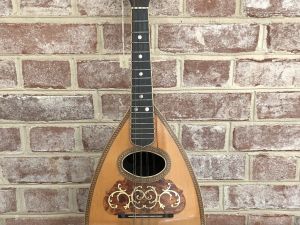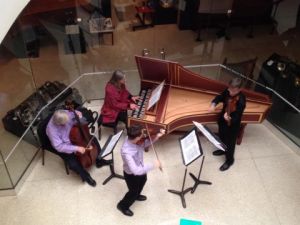The Clementi and Conservation

Have you wandered past the museum recently and seen something that looks a little funny? No, I'm not talking about the serpents or our tiny portative organ; I'm talking about our Clementi grand piano. It's looking a little different than usual, right? Maybe missing some parts?
That's because its pedals and action are currently being repaired at a conservator's laboratory.
A piano action is the mechanism that includes the keys and sound producing parts of the instrument. When a key is pushed down, the hammers strike the strings to make a sound. This whole series of parts and pieces is the action.
Piano pedals are pressed by the players feet and change the way the piano sounds. Most often, there is an una chorda pedal that makes the piano sound quieter by only allowing the hammer to strike one of the strings, not all of them, and a sustaining or damper pedal, which un-dampers the strings and allows them to resonate long after they've been struck by the hammer.
What makes a conservator important for an instrument like our 1805 Clementi grand piano is that he or she has been specially trained to perform work on objects like this - historic museum pieces. Instead of completely replacing and disposing of the broken, worn, or mismatched pieces, the conservator tries to keep as much of the historic, original instrument as possible in addition to making sure that any of the repairs are well documented and can be reversed in the future.
Don't worry; things may look a little funny for now, but we should have everything back in a few weeks. Make sure you come and see the Clementi when it's back and even more beautiful than before!






